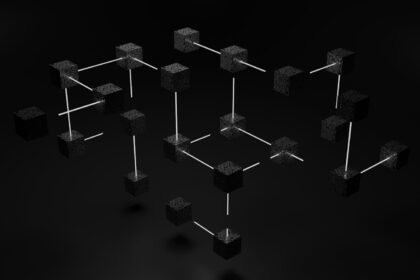Rollups offer a powerful approach to increase throughput by grouping multiple operations into a single batch before submitting them to the main chain. This method significantly reduces on-chain data load, enabling faster and cheaper interactions without compromising security guarantees inherited from the primary network.
Two prominent types of rollups, zk and optimistic, handle verification differently. zk-rollups generate succinct proofs that validate state changes instantly, while optimistic rollups rely on challenge periods and fraud proofs to ensure correctness. Both approaches aim to optimize performance but suit distinct use cases depending on finality requirements and computational resources.
Adopting layer2 solutions based on these techniques allows developers and users to benefit from enhanced scalability while maintaining decentralization. By leveraging batched commitments instead of individual submissions, networks can support higher volumes of economic activity with lower fees, making decentralized applications more accessible and practical for everyday usage.
Blockchain rollups: bundled transaction processing
Scaling solutions like rollups address network congestion by aggregating multiple operations into a single batch before submitting them to the main chain. This technique significantly enhances throughput and reduces individual fees, making decentralized applications more accessible. Both optimistic and zero-knowledge (zk) variants execute a large number of instructions off-chain while ensuring data integrity through proofs or challenge periods.
The core advantage of these mechanisms lies in their ability to compress numerous state changes into succinct summaries, which are then anchored on the base layer. Such bundling minimizes on-chain load without sacrificing security guarantees, allowing users to benefit from faster confirmations and lower costs. Layer2 implementations often differ in verification methods but share the goal of efficient mass execution.
Optimistic vs zk rollups: distinct approaches to scaling
Optimistic systems assume that all off-chain computations are valid by default and rely on fraud proofs triggered during disputes. This model delays finality for a challenge window but reduces immediate computational overhead. In contrast, zk rollups generate cryptographic proofs (SNARKs/STARKs) that verify correctness instantly upon submission, enabling near-instant settlement with higher upfront complexity.
For example, projects like Optimism employ optimistic rollups to bundle thousands of interactions into one summary, reducing gas consumption dramatically. Meanwhile, zkSync uses zero-knowledge proofs for similar aggregation but achieves quicker finality at the cost of more sophisticated cryptography and prover infrastructure.
Bundled execution benefits and technical challenges
Grouping operations together optimizes resource use by amortizing validation fees across multiple actions. This consolidation is crucial when demand spikes create bottlenecks on the primary ledger. However, developers must carefully handle data availability since insufficient information can undermine trust assumptions or delay user withdrawals.
- Data availability: Ensuring all necessary details for reconstructing state changes remain accessible off-chain or on secondary storage layers.
- Latency trade-offs: Balancing faster confirmation times against potential waiting periods required for fraud proofs or proof generation.
- Compatibility: Integrating with existing smart contracts while maintaining composability across ecosystems.
Real-world application scenarios and user experience
An everyday analogy involves mailing several letters together instead of individually–bulk postage lowers costs per item. Similarly, decentralized finance platforms leverage these techniques to bundle trading orders or payment settlements efficiently. Users experience reduced fees and quicker acknowledgments while retaining confidence due to transparent verification processes embedded within the protocol.
Tutorials guiding newcomers through wallet setup connected to layer2 solutions demonstrate how simple it becomes to send multiple transfers at once without incurring prohibitive expenses. These practical examples highlight how underlying technical innovations translate directly into improved usability for casual participants.
Future outlook: evolving infrastructures and interoperability
The ongoing development includes hybrid models combining zk proofs with optimistic dispute resolutions to achieve optimal performance under varied conditions. Cross-rollup bridges aim to enhance liquidity movement between isolated bundles, fostering a more interconnected environment beyond siloed chains.
Navigating adoption barriers: education and tooling improvements
A key hurdle remains educating both developers and end-users about interacting safely with second-layer environments while understanding their security nuances. Layer2 wallets have matured considerably yet require onboarding materials explaining differences from base protocols clearly and patiently.
This learning process encourages confident participation without overwhelming novices through gradual exposure: starting with simple sending operations before advancing toward deploying complex contracts using bundled execution frameworks. Step-by-step walkthroughs paired with real-time feedback help bridge initial uncertainty toward reliable competence in utilizing these advanced scalability techniques.
How rollups bundle transactions
Rollups improve scalability by aggregating numerous operations off the main chain, then submitting a single proof or summary back to it. This technique reduces on-chain workload while preserving security guarantees from the base layer. Both optimistic and zk implementations group multiple user interactions into one batch, streamlining data commitments and validation steps.
Layer 2 solutions like optimistic and zero-knowledge (zk) rollups differ in how they verify these combined inputs. Optimistic variants assume correctness initially, enabling faster inclusion but requiring dispute mechanisms if fraud is suspected. Zk-rollups generate cryptographic proofs that mathematically confirm batch validity before finalization, providing immediate assurance without challenge periods.
Mechanics of bundling within rollups
The aggregation process starts with collecting individual operations submitted by users or applications. These are compressed into a compact data structure, often utilizing Merkle trees or similar hashing schemes for efficient verification. By consolidating hundreds or thousands of requests into one payload, rollups minimize the size and frequency of updates sent to the primary ledger.
This bundled payload includes state transitions representing all executed instructions, which can be replayed or checked against proofs depending on the rollup type. For example, zk-rollups employ succinct zero-knowledge proofs like zk-SNARKs to validate entire batches cryptographically. Optimistic rollups instead rely on off-chain computation and post-facto dispute resolution through fraud proofs when discrepancies arise.
- Optimistic: Transactions processed off-chain with assumptions of honesty; disputes trigger verification.
- ZK-rollups: Use mathematical proofs generated alongside batch creation for instant trustworthiness.
An illustrative case is Arbitrum’s optimistic approach, which accumulates many calls and submits a compressed summary periodically to Ethereum’s mainnet. On the other hand, zkSync leverages zk technology to bundle transfers and token swaps efficiently while guaranteeing validity upfront through zero-knowledge proof generation.
The efficiency gains stem from reduced redundancy; instead of each operation being processed individually on-layer1, bundled sets allow verification of cumulative effects in one step. This also lowers transaction fees and congestion compared to direct base-layer execution. Developers benefit by deploying contracts compatible with these off-chain aggregators without sacrificing decentralization principles.
User experience improves as waiting times decrease significantly–especially noticeable during peak demand periods–thanks to batch submission intervals optimized for throughput versus latency trade-offs. Understanding this bundling architecture clarifies how advanced second-layer networks scale ecosystems while retaining trust rooted in original consensus mechanisms.
Data Availability in Rollups
Ensuring reliable data availability is fundamental for the security and scalability of layer2 solutions, particularly zk and optimistic variants. These frameworks operate by aggregating multiple operations into a single batch submitted to the main chain, which requires that all necessary information remains accessible for validators or verifiers to confirm correctness. Without guaranteed data availability, challenges arise in fraud proof generation for optimistic systems or validity proof verification in zero-knowledge constructions, potentially compromising finality and user trust.
Optimistic schemes rely on publishing calldata or compressed representations of bundled executions onto the base layer. This approach mandates that data remains retrievable during dispute windows, allowing anyone to reconstruct and verify state transitions independently. Failure to maintain continuous access may enable sequencers to censor or withhold updates, undermining the dispute resolution mechanism. Conversely, zk rollups produce succinct proofs attesting to the integrity of off-chain computations but still depend on transparent data publication to reconstruct historical states and support light clients.
Technical Mechanisms and Examples
The difference in data availability strategies influences performance trade-offs within scaling architectures. For instance, zk-based projects such as zkSync publish calldata on-chain alongside zero-knowledge proofs, ensuring immediate verification while preserving strong guarantees against invalid states. On the other hand, Optimism delays finality until fraud proofs are either confirmed or time out; thus, their design includes an extended challenge period during which transaction details must remain available externally via sequencer nodes or third-party operators.
A practical demonstration can be seen in Arbitrum’s approach: it batches numerous user interactions off-chain and posts compressed summaries with calldata hashes on Ethereum’s main network. Validators monitor this information actively; if discrepancies occur, they initiate interactive proofs using the published data. This system illustrates how robust availability underpins secure rollup functionality by enabling efficient dispute mediation without imposing excessive gas costs on individual transfers.
Security models of rollups
The security of layer2 scaling solutions relies fundamentally on their underlying validation mechanisms and dispute resolution strategies. Two primary architectures dominate this space: optimistic and zero-knowledge (zk) variants. Optimistic solutions assume data correctness by default, enabling rapid submission of batched operations to the main ledger without immediate verification, while zk implementations generate cryptographic proofs attesting to the validity of each aggregated operation before finalizing state updates.
Optimistic frameworks depend heavily on a challenge period where participants can contest potentially invalid state transitions. This introduces a trade-off between throughput and security latency; the longer the dispute window, the more secure but less responsive the system becomes. Conversely, zk constructions offer near-instant finality via succinct validity proofs, which drastically reduce trust assumptions but require sophisticated proof generation and verification infrastructures.
Mechanisms behind optimistic validation
In optimistic systems, batches of off-chain actions are submitted as compressed summaries to the main chain. These summaries do not include explicit proofs but rely on economic incentives for honest actors to detect and report fraudulent behavior within a predefined timeframe. If an incorrect update is challenged successfully, it triggers a rollback and penalizes dishonest submitters.
An illustrative example is Arbitrum’s approach, where validators post aggregated results alongside bonds that serve as collateral against fraudulence. This model encourages monitoring by economically motivated parties who act as watchers or verifiers, ensuring integrity through incentive alignment rather than continuous cryptographic verification at every step.
Zero-knowledge proof-based assurance
Zk variants leverage advanced cryptographic constructs such as SNARKs or STARKs to create succinct proofs that validate entire bundles of operations without revealing sensitive input data. The production of these proofs requires substantial computational resources but once generated, they enable instant confirmation upon submission to the base ledger.
For instance, zkSync employs recursive proof composition techniques allowing thousands of transactions to be collapsed into a single proof with verifiable correctness guarantees. This paradigm minimizes reliance on external validators since validity is mathematically enforced by the consensus protocol itself, thereby enhancing trustworthiness and reducing potential attack vectors related to validator collusion or censorship.
Data availability considerations
A critical component in both models is ensuring accessible transaction data for users wishing to reconstruct or verify state independently. Some layer2 designs publish all necessary information directly onto the root ledger (on-chain data availability), while others utilize off-chain storage combined with cryptoeconomic guarantees or fraud proofs for data retrieval.
StarkNet exemplifies an architecture prioritizing on-chain publication of compressed calldata alongside zero-knowledge validations, empowering full transparency and enabling any participant to audit execution history securely. Meanwhile, certain optimistic implementations rely on sequencers maintaining reliable data archives off-chain but protected by incentive-compatible dispute protocols.
Hybrid approaches and future trends
The evolving ecosystem explores combinations integrating zk proof efficiency with optimistic dispute mechanisms to balance scalability with robust security assurances. Rollups like Validium separate data availability from validity assurances by storing some information off-chain secured through zk proofs complemented by challenge periods for selective verification.
This hybrid strategy attempts to optimize throughput while mitigating risks associated with centralized data custodianship or extended finality delays inherent in purely optimistic solutions. Continued research focuses on improving prover performance, reducing cost overheads, and refining incentive models that encourage active participation from decentralized validators ensuring system resilience over time.
Cost savings with rollups
The primary method to reduce fees in layer2 solutions lies in aggregating multiple operations into a single on-chain proof, significantly lowering the per-operation cost. Technologies such as zk-based and optimistic variants achieve this by compressing numerous activities into compact data packages that require minimal mainnet interaction. This approach decreases the overhead traditionally associated with individual confirmations, allowing users to benefit from reduced expenses while maintaining security guarantees derived from the base ledger.
zk-layer2 implementations leverage zero-knowledge proofs to validate a large set of off-chain actions succinctly before submitting a concise validity proof on-chain. This compression results in transaction batches that consume far less gas compared to executing each action individually on the main platform. For instance, zkSync and StarkNet demonstrate up to 90% reductions in user fees by validating thousands of movements within one succinct cryptographic proof, showcasing remarkable efficiency improvements through this bundled verification process.
Comparing optimistic and zk approaches
Optimistic scaling solutions operate under an assumption model where activity is initially accepted without immediate validation, relying on fraud proofs submitted during a challenge period for dispute resolution. While cheaper in terms of computational requirements, these systems introduce longer withdrawal delays due to their dispute window. Optimistic schemes typically bundle transactions into aggregated blocks that post compressed state roots on the primary ledger but must reserve resources for potential challenges, impacting final cost profiles.
In contrast, zk-techniques finalize computations instantly with cryptographic certainty, enabling near-instant withdrawals and reducing liquidity lock-up risks. However, generating zero-knowledge proofs remains computationally intensive and can elevate operator costs slightly above optimistic models. Despite this, many projects report overall lower end-user charges due to drastically diminished gas consumption during on-chain commitments of compressed data sets.
A practical example includes decentralized exchanges utilizing layered scaling protocols: aggregators collect numerous swap requests off-chain and submit a single compressed update on layer1. This batching minimizes duplication of transaction costs such as signature verifications and state writes, effectively distributing fixed blockchain fees across many interactions. Users notice direct savings especially during network congestion periods when main chain expenses spike sharply.
The future trajectory points toward hybrid models combining benefits from both optimistic and zero-knowledge methods–balancing cost efficiency with rapid settlement times–to optimize user experience further. Meanwhile, integrating adaptive compression algorithms for action aggregation continues enhancing throughput without compromising decentralization or security assurances inherent in these second-tier frameworks.
Conclusion: Integrating Optimistic and zk Rollups for Scalable Layer 2 Solutions
Prioritizing the integration of both optimistic and zk variants on layer 2 protocols delivers a robust pathway for scaling main networks without compromising security. By aggregating multiple operations into compressed batches, these solutions dramatically reduce on-chain load while maintaining verifiable state transitions, which is critical for supporting high throughput and cost-efficiency.
The distinct trade-offs between optimistic methods–relying on fraud proofs–and zero-knowledge systems–leveraging succinct cryptographic proofs–offer complementary benefits depending on application demands. For instance, optimistic approaches excel in compatibility with existing execution environments, whereas zk implementations shine with near-instant finality and stronger data compression.
Key Technical Insights and Future Directions
- Layer 2 synergy: Combining optimistic and zk frameworks can harness scalability while addressing latency or trust assumptions intrinsic to each method.
- Data availability innovations: Emerging schemes like Data Availability Sampling will further enhance throughput by optimizing how bundles of operations are shared off-chain yet remain provably accessible on-chain.
- Cross-rollup interoperability: Protocols enabling seamless value transfer across different rollup types promise to unlock composability beyond isolated scaling islands.
- Security models evolution: Progressive improvements in fraud proof timeframes and zk proof efficiency will shape adoption curves and developer preferences.
A practical example lies in decentralized exchanges leveraging zk rollups to condense thousands of trades into succinct proofs submitted periodically to the base ledger, reducing fees while preserving transaction integrity. Conversely, payment networks might prefer optimistic solutions where broader EVM compatibility lowers integration overhead.
The trajectory suggests increasing modularity within ecosystem designs where underlying main chains function as secure settlement layers, leaving heavy operational duties to specialized side protocols. Such architectural shifts will broaden access by lowering user costs and enhancing responsiveness without sacrificing decentralization principles.
Ultimately, understanding nuanced mechanisms behind bundled verification techniques equips stakeholders–from developers to end-users–to navigate upcoming upgrades confidently. Embracing hybrid strategies tailored to specific use cases marks a decisive step toward scalable systems capable of supporting mass adoption globally.





